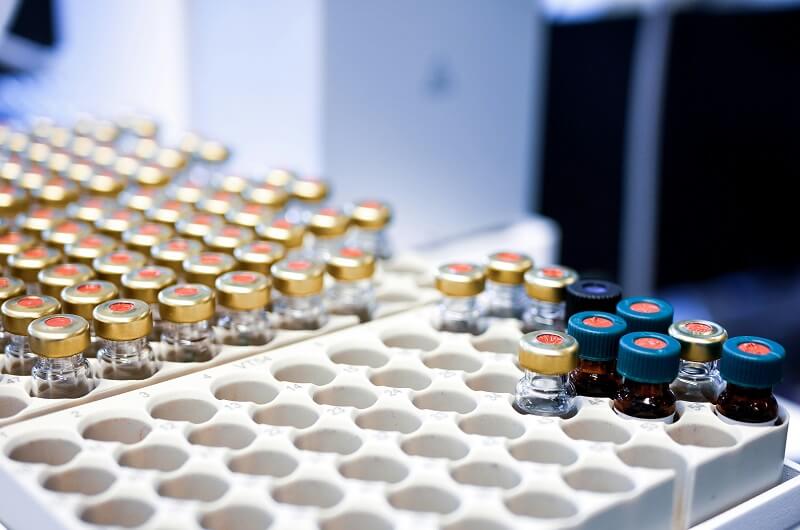Complete PBS Doctors Bag List: Medications and Their Uses

As a GP, you’re on the frontline every single day. Emergencies can happen anywhere—during home visits, in rural clinics, or even over the phone when time feels stalled. That’s where the doctors bag PBS steps in. This program empowers you with a carefully curated set of medications to manage urgent situations confidently.
This blog is your concise yet comprehensive guide to the PBS doctors bag list—what’s included, why each medicine matters, and how you use them safely. I’ll also point you to a trusted supplier, doctors bag PBS, so your kit stays ready when every second counts.
Prescriber Bag Basics—Scope, Access, and Use
Before we dive into the list, let’s clarify what the PBS prescriber bag covers and when you should use it.
You carry this bag when you must act immediately. It includes only medications—no devices or general supplies. Eligible prescribers, such as GPs and nurse practitioners, can access it under strict guidelines. You supply these drugs in urgent cases like asthma attacks, cardiac events, or allergic reactions where waiting for a prescription could cost lives.
The program balances accessibility with responsibility—you must record usage, follow ordering rules, and maintain oversight. The right preparation ensures care starts instantly, whether you’re at home, on the road, or deep in a rural setting.
How to Use This List
This guide organizes medicines by condition, making it quick and intuitive to use under pressure. For each item, you’ll find:
-
Primary Use – why it’s in the bag.
-
Route/Form – how you deliver it (IM, IV, inhaled, etc.).
-
Carry Notes – storage tips or expiration reminders.
-
Red Flags – when to escalate to hospital or call for backup.
Use this as your pocket reference for stock checks, training, or quick reviews before shifts. Always cross-check local guidelines and schedules to stay compliant.
The Complete PBS Doctors Bag Medications—By Condition
Anaphylaxis & Severe Allergy (≈120 words)
Adrenaline (epinephrine)
-
Primary Use: Reversal of anaphylaxis.
-
Route/Form: IM adrenaline auto-injector or ampoule.
-
Carry Notes: Check expiration monthly; store at room temperature.
-
Red Flags: No improvement after two doses—call emergency services immediately.
Hydrocortisone
-
Primary Use: Treats refractory allergic reactions or adrenal crisis.
-
Route/Form: IV or IM.
-
Carry Notes: Keep protected from light and check expiry.
-
Red Flags: Risk of infection or hypotension—monitor closely.
Promethazine (antihistamine)
-
Primary Use: Symptom relief after initial stabilisation.
-
Route/Form: IM or oral.
-
Carry Notes: Causes drowsiness—keep under supervision.
-
Red Flags: Severe sedation—ensure airways are secure.
Acute Respiratory Distress & Asthma
Salbutamol
-
Primary Use: Treat bronchospasm during asthma or exacerbations.
-
Route/Form: Inhaled via MDI or nebuliser.
-
Carry Notes: Keep inhaler clean and check dose counts.
-
Red Flags: No improvement after multiple doses—consider hospital transfer.
Ipratropium
-
Primary Use: Add-on for moderate to severe exacerbations.
-
Route/Form: Nebulised.
-
Carry Notes: Store sealed to avoid contamination.
-
Red Flags: Tachycardia or worsening distress—escalate promptly.
Chest Pain & Possible Acute Coronary Syndrome
Glyceryl Trinitrate (GTN) spray
-
Primary Use: Immediate relief of ischemic chest pain.
-
Route/Form: Sublingual spray.
-
Carry Notes: Keep out of direct sun and check nozzle function.
-
Red Flags: Hypotension or altered consciousness—call emergency services.
Soluble/Chewable Aspirin
-
Primary Use: Begin antiplatelet therapy in suspected MI.
-
Route/Form: Oral, 300 mg dose.
-
Carry Notes: Store in dry place.
-
Red Flags: Known bleeding disorders—use caution.
Fluid Overload & Pulmonary Oedema
Furosemide
-
Primary Use: Reduce fluid overload in acute pulmonary oedema or CHF.
-
Route/Form: IV injection or infusion.
-
Carry Notes: Requires IV access setup; monitor urine output and BP.
-
Red Flags: Hypovolemia or renal impairment—adjust or escalate.
Hypoglycaemia
Glucagon
-
Primary Use: Raise blood glucose when IV access is delayed.
-
Route/Form: IM or SC injection.
-
Carry Notes: Reconstitute before use; store powder separately.
-
Red Flags: Repeat doses may be required—monitor glucose closely.
Seizure Control & Acute Agitation
Diazepam
-
Primary Use: Control of seizures or severe anxiety.
-
Route/Form: IV or rectal gel (community use).
-
Carry Notes: Note concentration (2 mg/ml); watch for respiratory depression.
-
Red Flags: Prolonged sedation—have ABCs ready.
Midazolam (if available)
-
Primary Use: Rapid seizure control.
-
Route/Form: IM or buccal.
-
Carry Notes: Use calibrated device; monitor ventilation.
-
Red Flags: Severe sleepiness—ensure airway safety.
Severe Infection—Early Parenteral Therapy
Benzathine Benzylpenicillin
-
Primary Use: Prophylaxis for rheumatic fever, streptococcal infections.
-
Route/Form: IM.
-
Carry Notes: Reconstitute at point of care; check sensitivity patterns.
-
Red Flags: Allergies or rash—avoid if suspected.
Benzylpenicillin
-
Primary Use: Treat meningococcal or other serious infections.
-
Route/Form: IV bolus.
-
Carry Notes: Store refrigerated if needed.
-
Red Flags: Severe allergic reactions—be ready with adrenaline.
Ceftriaxone (where applicable)
-
Primary Use: Broad-spectrum agent against severe infections.
-
Route/Form: IV or IM.
-
Carry Notes: Check local PBS rules—it may not be available.
-
Red Flags: C. difficile risk—use only when necessary.
Nausea & Vomiting
Metoclopramide
-
Primary Use: Gastrointestinal nausea or migraines.
-
Route/Form: IM or oral.
-
Carry Notes: Watch for extrapyramidal reactions.
-
Red Flags: Restlessness or dystonia—stop and treat.
Promethazine
-
Primary Use: Motion sickness, allergic-related nausea.
-
Route/Form: IM or oral.
-
Carry Notes: Sedation risk—do not leave patient unsupervised.
-
Red Flags: Confusion or respiratory depression.
Suspected Opioid Overdose
Naloxone
-
Primary Use: Reverse opioid toxicity and opioid-induced respiratory depression.
-
Route/Form: IM or intranasal.
-
Carry Notes: Titrate doses to restore adequate breathing.
-
Red Flags: Recurrence of overdose symptoms—monitor and repeat if needed.
Storage, Scheduling & Record-Keeping Essentials
Proper storage and record-keeping make your doctors bag reliable.
-
Store temperature-sensitive meds (like adrenaline and hydrocortisone) at room temperature out of direct sunlight.
-
Secure schedule 8 (e.g., morphine, diazepam) in lockable cabinets.
-
Use clear, dated labels; record batch numbers and lot.
-
Document every use—even partial doses—with patient ID, date, and outcome.
-
Log witnessed wastage or returns as per regulation.
-
Keep audit-ready records—you avoid headaches and improve patient safety.
Rural & Remote Considerations
In rural and remote settings, your doctors bag becomes even more critical:
-
Limit travel and delayed support mean you rely on what you carry, not what’s around the corner.
-
Choose medications with longer shelf life and better temperature stability.
-
Set up local pharmacy partners or courier contacts to top up supplies.
-
Have a communication plan with retrieval services and include contact numbers on your checklist.
-
Train practice staff to help with kit prep and documentation—share the responsibility.
Reordering Cadence & Expiry Management
Stay fresh, accurate, and compliant with these strategies:
-
Do a stocktake every month—check doses, expiry, and open volumes.
-
Tag near-expiry items visually; use them first when feasible.
-
Order small quantities but often—this keeps the kit current and minimizes waste.
-
After emergencies, replenish immediately. Don’t let your kit sit half-full.
-
Keep a reorder log date-stamped to track usage and patterns over time.
Also Read: Can IV Drip Therapy Support Better Skin Health?
Conclusion—Quick Recap & Next Step
Your PBS doctors bag list gives you control in the sharpest moments. Knowing precisely what’s inside—and how to use it—means you act fast and with clarity. Create that stock-check rhythm, stay compliant, and train your team to support readiness. When you trust your kit, you trust your ability to care. And if you need a reliable source, check out doctors bag PBS to stay prepared.







